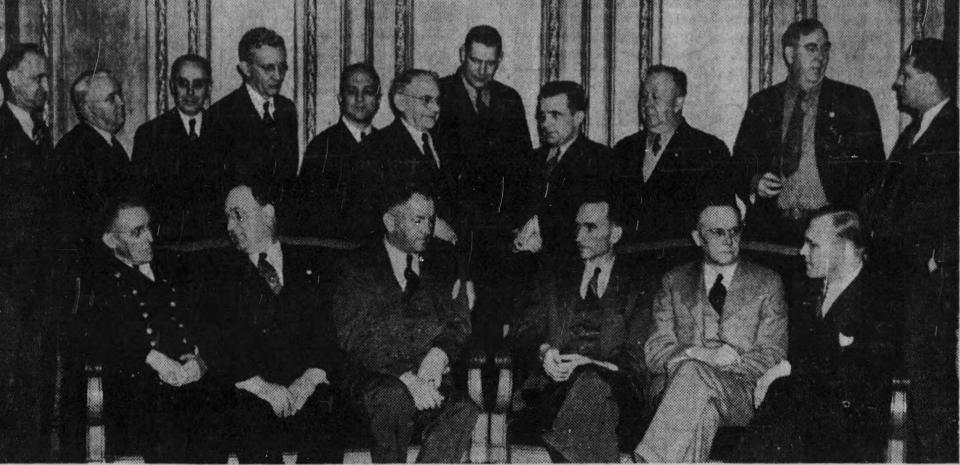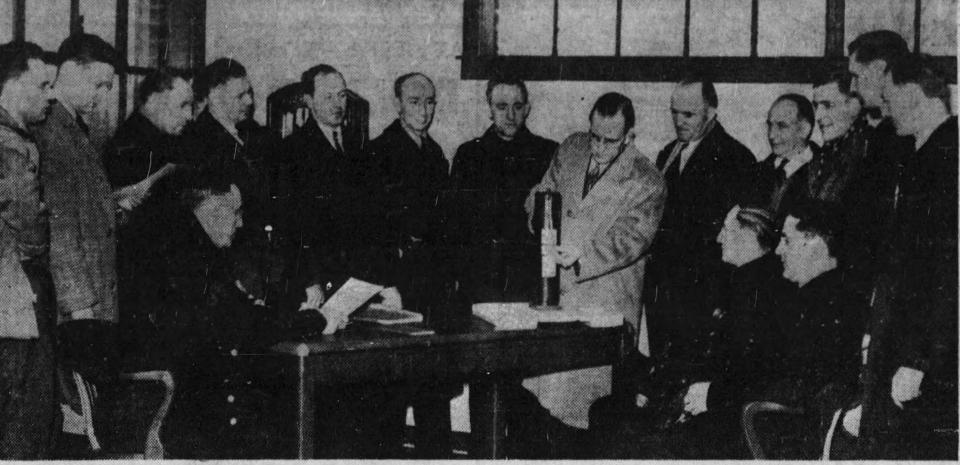World War II blackout drills in Broome County: How the region prepared in 1942
The date is two months after the Japanese attack on Pearl Harbor. The nation has been plunged into the depths of World War II. It would be an understatement to say that that nation was not ready for total war and all of its ramifications on everyday life on the home front.
Aside from the human and naval losses at Pearl Harbor, the country had to gear up for the making of munitions, of bombs, of ships, of planes, and of everything needed to move thousands of troops to the fields of action.

Yet, on the homefront, life was not normal. There were sudden and deep scarcity of supplies that led to a series of ration coupons that every family had to carefully maintain. A large percentage of the men left to join the service and women replaced many of them on the assembly line. The images of Rosie the Riveter were everywhere, but in this region, women had already been in that role in factories such as those at Endicott Johnson.
Another change in home life was the very real threat of attack from either the Japanese or the Germans. To prevent such an attack, the United States government, working with local government officials and industrial and business leaders, had instituted a series of requirements to begin blackouts at various times across the region. It would require buildings to have blackout curtains, turn off most lights, and for vehicles to have their lights off during each drill.

London had already developed a stringent series of actions during each blackout drill, so why couldn’t our area? An early drill had taken place during December, but it was not really successful, as many individuals were not well trained or educated on the mechanics of such a drill. It was only a few weeks since the country had entered the war. More time and another drill were felt to be needed.
The second drill was scheduled for the night of Feb. 11, 1942. Government officials arrived in the area — both to train and observe the drill. After all, our area was strategic in the war effort with Ansco, IBM, EJ and many other companies being part of the war effort. This time, they felt they were prepared. Defense plants and trucks were exempt from the lights out rule, but trucks had to travel at less than 20 miles per hour.

At the appointed hours, fireworks, sirens, and noise bombs were set off to notify the public that the blackout drill had begun and it was to be observed. It was a countrywide blackout and areas with defense plants such as Broome County were strictly graded on the success or failure of that drill. It was 8 p.m. when the lights went out, and for the next 15 minutes everything was black.
Well, everything was supposed to be black. But in this instance even the new black was not really the new black. When the lights came back on at 8:15 p.m., the success of the blackout drill was given a grade.

Let’s just say we did not get an “A.” If you read the many articles over the next two weeks about this drill, the grade was closer to a “B minus.” There was a lack of air wardens in business districts, perceptible light could be seen through many of the so-called blackout curtains in area industries. The drill was observed from the air, and lights could be seen in a number of areas.
Both defense department officials and local residents were not happy — some with each other, and some with what was deemed poorly instituted regulations.
More: How Broome history column's beginning is tied to a dog sweater company
The results were announced for each community throughout the region. It appeared that more time and more practice was certainly needed. They were right. More practice was needed, and it would be a practice that many households had to be accustomed to over the next four years.
It was a time of tremendous change and sacrifice. Blackout drills, whatever degree of success, slowly became part of that new normal under wartime conditions. I wonder how many households today could make that swivel to wartime conditions. Interesting thought.
Gerald Smith is executive director of the Tioga County Historical Society and a former Broome County historian. Email him at historysmiths@stny.rr.com.
This article originally appeared on Binghamton Press & Sun-Bulletin: Blackout drills in Broome County: How the region prepared in 1942

